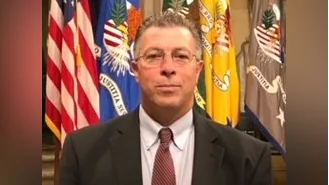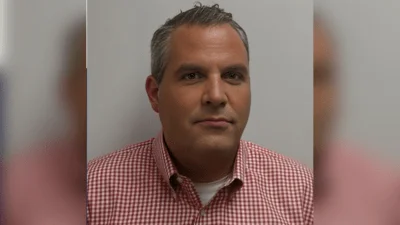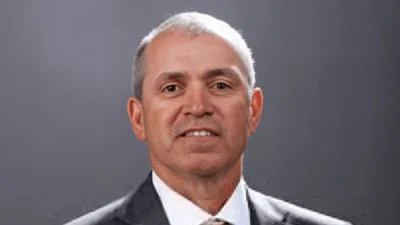The Congressional Record is a unique source of public documentation. It started in 1873, documenting nearly all the major and minor policies being discussed and debated.
“CORONAVIRUS” mentioning Chuck Grassley was published in the Senate section on pages S1006-S1007 on March 3.
Of the 100 senators in 117th Congress, 24 percent were women, and 76 percent were men, according to the Biographical Directory of the United States Congress.
Senators' salaries are historically higher than the median US income.
The publication is reproduced in full below:
CORONAVIRUS
Mr. GRASSLEY. Madam President, this week, my Democratic colleagues are poised to push through the Senate here an untargeted and unfocused
$1.9 trillion tax and spending package, and it is all being done under the guise of COVID relief. Some of it is very essential for COVID relief but a small part of it.
This whole act is very unfortunate because it didn't have to be this way. In the past year, Republicans and Democrats were able to work together to pass more than $4 trillion in COVID relief, and it was all done with strong bipartisan support.
From the start of this year, my Republican colleagues and I have stood ready to engage in good-faith, bipartisan negotiations to provide further targeted relief. However, despite all the talk of unity and bipartisanship by President Biden, the new Senate majority hasn't even attempted to reach across the aisle. Bipartisanship worked 5 times over the last 12 months, starting about 1 year ago right now.
The majority, demonstrating their unwillingness to compromise, has resorted to using special budget procedures so that they may pass a partisan bill strictly along party lines. The result is going to be an unwieldy, nearly $2 trillion package that isn't shaped according to current economic realities but strictly by a partisan liberal agenda.
In February, the nonpartisan Congressional Budget Office, CBO, projected that even without any further stimulus, gross domestic product will return to its prepandemic levels by mid-2021, and, for the year, the economy will grow at 4.6 percent.
If those two points aren't strong enough, it was recently reported that retail sales jumped 5.6 percent during January, and the National Retail Federation is projecting retail sales for the year to grow at the fastest rate in two decades.
If those four points aren't enough, at the same time, personal income is reported to have risen by 10 percent, and the personal savings rate has surged from a historically high 13.4 percent to over 20 percent.
The American economy will soon be roaring without a $2 trillion further stimulus. It is no longer March of 2020 when the economy was in free fall and businesses and places of employment were shut down. And how were they shut down? By those of us right here in the Congress of the United States, the Federal Government doing it by government edict.
While many individuals and certain sectors of our economy continue to struggle and, of course, deserve a helping hand, others have largely recovered and are no longer in need of assistance. At this time, instead of $2 trillion, two-thirds of it not needed, why not help those hurting and not pour gasoline on the inflationary fires? A COVID relief package should reflect this reality in both size and scope.
Even longtime Democratic economists, such as Obama's former Director of the National Economic Council, have raised concerns about enacting nearly a $2 trillion stimulus package at this point when we are already in recovery. As former Secretary of Treasury Summers--I also referred to him as Director of the National Economic Council--this is what he says: ``The proposed Biden stimulus is three times as large as'' the gap between actual and potential output as estimated by the CBO.
Enacting a stimulus unmoored from economic reality poses real risks to our economy, including inflation and slower economic growth moving forward. In fact, a Penn Wharton Budget Model analysis of the President's proposal projects the proposed stimulus would result in a decrease in both GDP and wages in 2022 and over the next 2 decades.
While inflation has been subdued in recent years, we shouldn't let that lull in inflation lull us into a false sense of confidence that we can spend with impunity with no consequences. We are in unchartered waters with debt held by the public exceeding the size of our economy and trillion-dollar annual deficits.
Moreover, as economist John Greenwood and Steve Hanke, professor of economics at Johns Hopkins, recently warned:
The money supply will grow by nearly 12 percent this year. That's twice as fast as its average growth rate from 2000-19. It's a rate that spells trouble--inflation trouble.
And that is without another round of stimulus that we are going to be debating in the next few days here on the floor of the U.S. Senate and probably passing before the end of the week.
Concerns of inflation have been dismissed by the White House and by the Federal Reserve. This sounds too familiar to those of us who witnessed the stagflation of the 1970s. We were told by President Nixon and his advisers that they could spend their way to lower unemployment and economic growth without inflation. They were wrong. The Nixon administration's mistakes ushered in a decade of disastrous inflation. I have said for decades, if Nixon did something, we ought to learn from it, not repeat it.
It was with this background of stagflation that I first ran for Congress on a platform of fighting inflation. Inflation is a regressive stealth tax on every single American. It is particularly unfair to those who have very little money to begin with, and those who have lived beneath their incomes to save for the future only to see their hard work wiped out as the value of the dollars that they put away plunges. Hopefully, Nixon inflation is only history never to return.
But none of us can guarantee that inflation won't return. Not only is the size of this stimulus package detached from reality; so is the scope. A common adage for stimulus and economic relief measures is that they should be timely, they should be temporary, and they should be targeted. By this standard, the Democrats' stimulus is well wide of the mark.
More than one-third, or about $700 billion, of the funding in the bill wouldn't even be spent until 2022 or beyond, according to the CBO. How does anybody know that we need a stimulus in 2022 and beyond? By what standard does the Biden administration say that we are going to need that? And doesn't that have something to do with the failure of this bill to accomplish what it wants to accomplish, or even the need for it, if some of this money won't be spent until the outer years?
I don't know about you, but I don't see how spending hundreds of billions of dollars years from now is either timely or targeted. As these economists talk about a stimulus, if it is going to be any good, it needs to be timely and targeted.
What does all this have to do with fighting the pandemic right now, with the people hurting right now? Are these same people going to be hurting in these out years when some of this money is going to be spent? If that is the case, this brand-new administration is already admitting that their policies of the future are a failure and a failure today.
Nearly a quarter of the package, or $422 billion, is dedicated to direct payments to households with incomes up to $200,000, all regardless of whether they have lost a job or experienced any loss of income. Such untargeted payments make little sense when just this past week it was reported that personal income was up 10 percent and personal savings rates soared to over 20 percent. We clearly shouldn't be using taxpayer dollars to pad the bank accounts of those with six-
figure incomes when we ought to be targeting this toward those who are unemployed and those who are low income.
Then we have another $350 billion of this package that is going to be allocated to bail out fiscally irresponsible States at the expense of States that have managed their State budgets wisely, like my home State of Iowa. This spending is hard to justify given recent reports indicating most States saw little to no drop in revenue between 2019 and 2020. And many States that were previously projecting shortfalls are now projecting budget surpluses.
The package also includes hundreds of billions of dollars in liberal wish-list priorities that have very little to do with the current pandemic. This includes enhancements to refundable tax credits, an expansion of ObamaCare subsidies, and an $86 billion taxpayer bailout of poorly managed pension plans.
On poorly managed pension plans, that is something that I have been trying to reform over the last 2 years, and reform is necessary, as much as helping them with taxpayer dollars. But there are absolutely no reforms in this stimulus of those multiemployer pension plans. It is simply an $86 billion bailout.
In the case of COVID, there are some things that no amount of money can address. Until the widespread immunity is achieved, many people will not feel comfortable eating out, going to a movie, taking in a concert, or traveling on a vacation. Spending trillions of dollars will not change the attitude of those people who are going to still be very cautious.
So here is what I would spend the money on--and a lot less money than
$1.9 trillion. Yes, let's prioritize funding for vaccine distribution, assistance for the unemployed, and aid for small businesses in the struggling sectors. And, by all means, let's open our schools. Doing this doesn't require $2 trillion. Let's remove the pork in this bill. Let's set aside the long-term leftwing wish list and work together as we did before in those five bipartisan bills over the last 12 months. And they have passed both bodies overwhelmingly.
Several of my Republican colleagues approached the White House a few weeks ago with a long list of what I just said--maybe a longer list of items proposed by President Biden that could get Republican support with minimal tweaks. A bipartisan package along those lines could well have passed a few days ago. It is still not too late. I hope we can make a bipartisan effort happen again
I yield the floor.
The PRESIDING OFFICER. The Senator from Wyoming.
Mr. BARRASSO. Madam President, first, I would like to associate myself with the outstanding remarks from the senior Senator from Iowa, whose long experience in this body is one that we all look to with great admiration and respect.
When he speaks on this, he is well known for his fundamental focus on taxpayer dollars and making sure money isn't wasted, making sure money is directed to the areas where it is supposed to go, where it is needed the most. When he points out how this is a bill basically piled on with pork--and he is from Iowa; he knows about pork--he points out how misguided this effort is, how expensive it is, and how misdirected it is.
I just want to associate myself with these wonderful remarks of the senior Senator from Iowa, and it is a pleasure and a privilege to serve with him.
____________________





 Alerts Sign-up
Alerts Sign-up